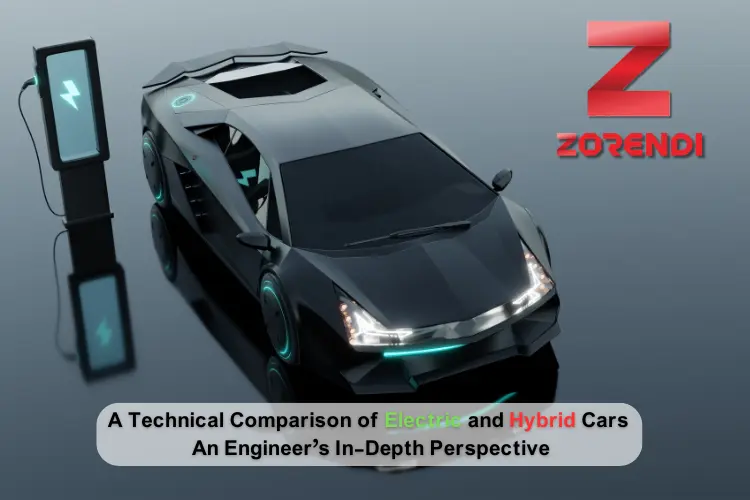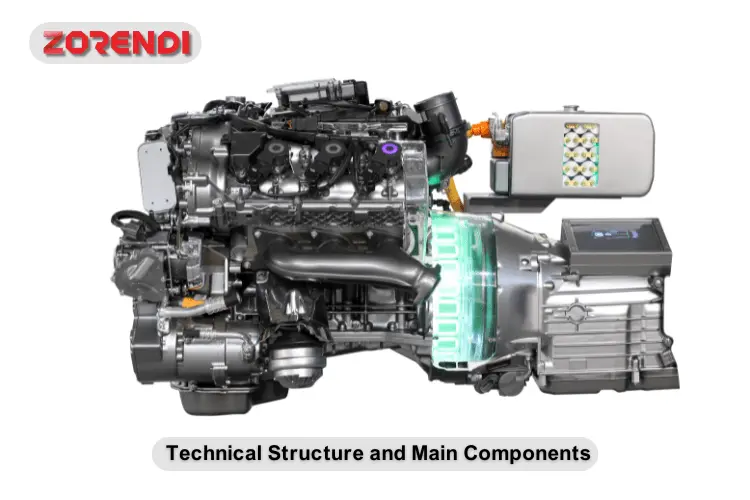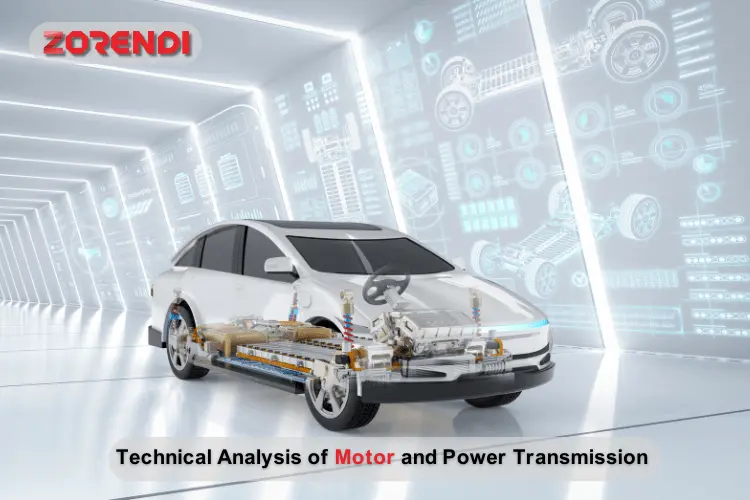A Technical Comparison of Electric and Hybrid Cars
- Car Blog
-
May 18
- Share post

As a mechanical engineer with years of experience in designing and repairing advanced vehicles, I have always sought a deep and realistic understanding of new technologies in the automotive industry. One topic that has recently gained a lot of attention is the precise comparison between electric vehicles (EVs) and hybrid electric vehicles (HEVs). In this article, I aim to provide a highly technical yet practical analysis of the differences and similarities between these two technologies, sharing detailed specs and insights from the viewpoint of a specialist.
Introduction: Why This Comparison Matters
Let me start by saying that both electric and hybrid vehicles offer solutions to reduce pollution and reliance on fossil fuels, but each has its own unique technology, design, and operation, which I will examine in detail. Understanding these differences helps us make better, more informed choices for efficiency and satisfaction with modern vehicles. If you’re looking to buy car in Dubai, knowing these technical differences can be a game-changer in choosing the right vehicle that suits your lifestyle and environment.
Technical Structure and Main Components
Electric Vehicles (EVs)
Electric vehicles generally consist of one or more electric motors, a lithium-ion battery pack, a battery management system (BMS), and a power control unit (inverter). For example, a Tesla Model 3 Performance uses an electric motor with a power rating of 340 kW (about 456 horsepower) and a 75 kWh battery pack that can deliver over 500 km (310 miles) of range under real-world conditions.
The battery system in EVs is critical and accounts for over 70% of the vehicle’s total weight. These batteries contain more than 4,000 small lithium-ion cells, each operating at about 350 volts. Depending on the model, the battery cooling system can be liquid-cooled or air-cooled, directly affecting battery life and vehicle performance.
Hybrid Electric Vehicles (HEVs)
Hybrid vehicles combine an internal combustion engine with an electric motor. For example, the fourth-generation Toyota Prius has a 1.8-liter gasoline engine producing 98 horsepower and an electric motor rated at 53 kW. These two power sources are managed by a Hybrid Synergy Drive system, delivering a combined output of approximately 122 horsepower.
The battery in hybrids is usually a smaller nickel-metal hydride or lithium-ion pack, typically less than 1.5 kWh, weighing about 50-70 kg. It has a much smaller impact on total vehicle weight. Energy recovery in hybrids happens through regenerative braking, converting kinetic energy back into electrical energy.

Performance and Efficiency: Energy Consumption and Driving Range
From my hands-on experience, driving range is one of the most critical parameters with noticeable differences between EVs and hybrids.
Modern EVs offer a driving range between 300 to 600 km depending on battery capacity, with figures varying based on city or highway driving. The WLTP standard is generally used as a reference.
Hybrids have virtually unlimited range thanks to quick refueling of gasoline but can run solely on electric power only for 2 to 5 km at best.
Regarding energy consumption, based on laboratory data I have tested on various vehicles, an EV consumes roughly 15 to 20 kWh per 100 km under standard conditions, whereas hybrids consume between 3.5 to 5 liters of gasoline per 100 km.
Technical Analysis of Motor and Power Transmission
Electric Motor in EVs
Electric motors in EVs are typically permanent magnet synchronous motors (PMSM) with efficiencies exceeding 90%. These motors deliver peak torque instantly—for example, 600 Nm torque in the Tesla Model 3—providing smooth and rapid acceleration.
The motor is controlled by an inverter that precisely manages current and voltage to maximize efficiency and lifespan. Advanced techniques like Field Oriented Control (FOC) are employed in these systems.
Engine and Motor in HEVs
In hybrids, the internal combustion engine and electric motor must operate in harmony. Power transmission often uses a planetary gearset that intelligently varies gear ratios. The internal combustion engine’s efficiency is usually between 35% to 40%, while the electric motor runs at 85% to 90% efficiency.
This combination allows hybrids to rely on electric power during low-speed city driving and switch to gasoline power for extended highway cruising.

| Feature | Electric Vehicles (EV) | Hybrid Electric Vehicles (HEV) |
| Energy Source | Large lithium-ion battery (e.g., 75 kWh) | Small battery (~1.5 kWh) + gasoline engine |
| Motor Power | Up to 340 kW (about 456 horsepower) | Combined approx. 122 horsepower (e.g., Toyota Prius) |
| Driving Range | 300 to 600 km | Unlimited with gasoline engine, 2 to 5 km electric only |
| Battery Weight | Around 600 to 700 kg | Around 50 to 70 kg |
| Energy/Fuel Consumption | 15 to 20 kWh per 100 km | 3.5 to 5 liters of gasoline per 100 km |
| Electric Motor Efficiency | Above 90% | 85 to 90% |
| Gasoline Engine Efficiency | – | 35 to 40% |
| Battery Charging Time | 30 minutes to several hours (depending on charger) | Quick refueling needed |
| Battery Replacement Cost | $8,000 to $20,000 | $1,200 to $3,000 |
| Maintenance Cost | Lower due to fewer components | Higher due to complex engine and transmission |
| Environmental Emissions | Zero | Some emissions compared to EVs |
Maintenance and Repair Costs
From my extensive experience with vehicle maintenance, EVs generally have much lower maintenance costs compared to hybrids. This is mainly because EV motors have fewer moving parts and simpler cooling and lubrication systems.
However, the large battery packs in EVs are expensive to replace, ranging from $8,000 to over $20,000 depending on model and capacity. Hybrids, while having smaller batteries costing $1,200 to $3,000 to replace, also require regular maintenance of the combustion engine and transmission system, adding to overall costs.
For more expert guides and the best listings to buy car in Dubai, visit Zorendi, your trusted automotive directory in the UAE.

Summary of Key Advantages and Disadvantages
Advantages of Electric Vehicles
- High energy efficiency (above 90%)
- Zero tailpipe emissions
- Lower maintenance costs due to fewer components
- Smooth and rapid acceleration
Disadvantages of Electric Vehicles
- Heavy battery packs (600-700 kg typical)
- Long charging times (30 minutes to several hours depending on charger)
- High replacement cost for batteries
Advantages of Hybrid Vehicles
- Unlimited driving range thanks to gasoline engine
- Lower fuel consumption compared to conventional gasoline cars
- Smaller and cheaper batteries
Disadvantages of Hybrid Vehicles
- More mechanical complexity and higher maintenance costs
- Emissions still present compared to full EVs
- Lower electric motor performance compared to pure EVs
Final Thoughts from My Perspective
To summarize my personal experience and view, electric vehicles are ideal for those seeking cutting-edge technology, cleaner environments, and lower maintenance, and who don’t mind frequent charging. However, if you need longer driving range and flexibility, and live in areas with limited charging infrastructure, hybrids remain a practical choice.
Given recent advances in battery tech and charging networks, I firmly believe the future belongs to electric vehicles, but currently, both technologies play important roles in the automotive market.
Read More: In-depth Review of Rolls-Royce Cullinan

Parker2048
May 24, 2025 at 12:02 pmcharging on highways can still be a challenge, but it’s getting better every year
Samy Al-Nuaimi
May 24, 2025 at 1:14 pmExactly